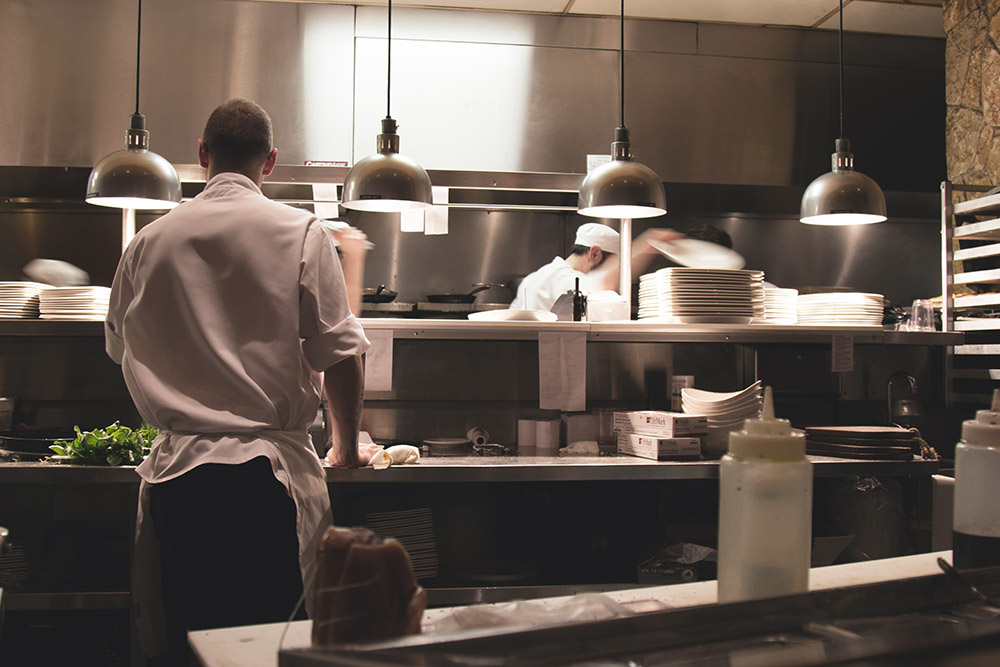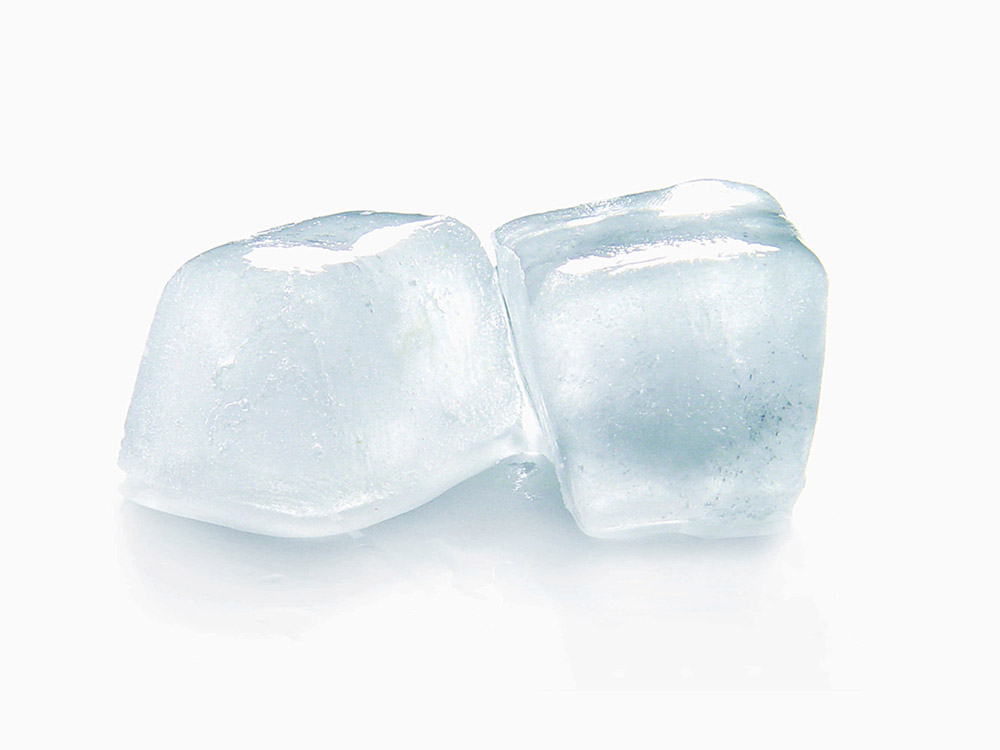Original article by Kelly Killian for Restaurant Business Online

Last spring, a rash of closings struck the Washington, D.C., restaurant scene, causing the Eater DC blog to dub the period “30 days of Terror.” In the five weeks between May 21 and June 20, 14 restaurants closed or were rumored to close soon, including Buddha Bar’s two-year-old high-profile D.C. outpost. The next spring, D.C. rebounded, racking up an astonishing 50-plus new restaurants, a phenomenon Eater DC called “the craziest spring restaurant season.”
Above that tsunami of activity, the District’s legendary Old Ebbitt Grill stands firm—and it has for 157 years. Through Presidential Administrations dating back to Andrew Johnson, World Wars and new ownership, it has done what so many of its neighboring concepts only wish they had—survive. Moreover, Old Ebbitt Grill has positioned itself at the top of the D.C. restaurant scene—and beyond, having ranked repeatedly among the top-grossing independent restaurants in the country. Part business smarts, part do-whatever-it-takes resilience and a heavy dose of passion is the stuff that fuels businesses like Old Ebbitt to serve and compete year after year, decade after decade.
In the new book “A Century of Restaurants” author Rick Browne points out a number of “truths” shared by restaurants that have enjoyed long-term success—truths he discovered during his literary quest to visit 100 of the U.S.’ oldest eateries. We’ve shared some of those here and built on them by asking operators of some of America’s most seasoned restaurants to share their secrets. Here’s what they know that all restaurateurs should.
Secret No. 1: Do the same thing well every time
There are tons of reasons restaurants fail: Many are undercapitalized. Some reside in a location that’s doomed. Others are launched by people who simply don’t have the business chops.
Ask why restaurants succeed, however, and “there’s one thing that holds true,” says Alex Susskind, associate professor of Food and Beverage Management at Cornell University School of Hotel Administration in Ithaca, N.Y. “It’s consistency—doing the same thing day in and day out for your customers, growing and developing with them. It’s not giving into trends and fads, but knowing who they are and why they’re coming.” Whether it’s a restaurant that’s been doing well for 100 years or for 25, the key is doing the same thing well every time. “That’s what people come back for,” Susskind says. And that consistency directly impacts the bottom line.
Consistency in service, quality, the menu—the whole experience—is what keeps people coming back. “Guests will want to come back because something you did for them is worth coming back for,” says Susskind. “It may be a single dish. It may be for the [unique] cocktail program, or that the staff is so attentive. Whatever it is, if you do it different next time, you run the risk of them not coming back.”
Veteran operators are quick to note, however, that consistency isn’t complacency. Things change, and menu items, policies and even decor can and must evolve over time.
At the Berghoff, a 115-year-old full-service restaurant in Chicago, fourth-generation owner Carlyn Berghoff embraced the idea of transforming the German-American menu to include gluten-free options. “I saw the effects celiac [disease] had on my daughter when she’d go out to eat,” Berghoff says. “I wanted to create a place that was safe to eat for people with allergies.” Bringing her personal campaign to the menu at the restaurant has paid off. Now one-third of the hits on The Berghoff’s website are for ‘gluten-free dining,’ and she plans to expand her efforts. “This has been a segment of the business to grow, and it’s a market no one expected us to be in,” says Berghoff who also has written a cookbook with gluten-free recipes and wants to tackle more allergens next. “It has been a good way for me to continue to grow new customers and bring new people to the restaurant.”
Still, she’s careful not to change too much. “You don’t change the top 10 favorite things people eat here,” she says. At the Berghoff, that means Weiner Schnitzel, Sauerbraten and German Chocolate Cake are here to stay.
Secret No. 2: It’s the customer, stupid
At long-successful restaurants, the relationship with the customer is at the heart of everything. “These restaurants all make customers feel at home—literally, like they’re coming back home,” says Browne.
Ina Pinkney, the “Breakfast Queen of Chicago” who will retire this month after 33 years in the business and close her beloved spot Ina’s, has kept the personal touch at the center of her business, even as technology has shifted the way people interact with restaurants. “We have a customer who comes in every morning,” she says. “When we see the car pull up, a couple things happen: The server puts his order in because the man eats the same thing every day. We take the second place setting away at the table. We put a pen down. He walks in and picks up the New York Times Arts section and opens it to the crossword … And he [sits down], picks up the pen and does the crossword. When his food comes out he gets the check presenter because he likes to leave when he likes to leave, and he doesn’t like to talk at all in the morning. Then he opens it up, he puts the money in and closes it. He stands up, refolds the paper, puts it back at the front and leaves.” Says Ina, “Now, you show me an algorithm that can take care of Bruce.”
Having a close connection to guests means veteran operators also are skilled at reading guests’ cues and what they mean for business. “Customers give you feedback every single day, by the smiles or frowns on their faces,” says Susskind. “It’s about noticing how they react to things. If you ignore what is keeping your guests excited, you’re probably missing crucial information.”
Berghoff agrees. “There are economic indicators in all of our businesses that we just need to pay attention to,” she says. “On the Monday after Thanksgiving, I look at how many people come in with a lot of bags and what they eat,” she says. “If they’re ordering entrees, it’s going to be a good holiday season. If they’re buying sandwiches, you’re going to have a harder time meeting your numbers. If they’re ordering dessert or appetizers, you’re going to have a great holiday.”
Secret No. 3: Empower the staff
If the guest is No. 1, a close No. 2 is your staff, says Brad Rosenstein, president and owner of Jack’s Oyster House in Albany, N.Y., which just celebrated its 100th anniversary. “Making the staff feel appreciated, empowering each individual to take ownership of their position and allowing them to make mistakes (as long as they didn’t do it on purpose) is so important,” he says.
John Laytham, CEO of Clyde’s Restaurant Group, owner of Old Ebbitt Grill and other concepts in the Washington, D.C., area says that aside from having good food, focusing on employees is what helped Clyde’s restaurant get through challenging early years in the 60s and 70s. “We developed our own training program—no one had done much before that,” Laytham says. The program, which trained managers how to tailor their management style to the level of the employee they’re dealing with, resulted in less turnover among the staff. “We had employees who really enjoyed what they were doing and went to work every day trying to do a good job. It made a difference in the relationship between the staff and the customers.”
The focus on training and arming the staff with the freedom to make things right with customers still is a priority at all the restaurants in the Clyde’s group. At Old Ebbitt Grill, Managing Director David Moran relies on the servers and managers to be that link to the guests. “We have nine front-of-house managers, including the general manager, and every one of them is on the floor,” he says. “There’s nothing that replaces touching your tables.” Moran’s team also makes a practice of sharing what they hear from guests with the rest of the staff. “If you’re not listening to your customers, you’re not going to be in business,” he says.
Secret No. 4: Be a business family, not a family business
In his book, Browne points out the most common thread that runs through America’s oldest restaurants is a continuation of ownership within a family. “Even when ownership has been transferred to outsiders,” Browne writes, “there is usually a familial tie, or the new owners are personal or business acquaintances of the previous owners or customers.”
According to the U.S. Census, 41 percent of businesses operating in the accommodation and food services space were family-owned. That includes many of the country’s oldest restaurants—such as The Berghoff, Antoine’s in New Orleans (originator of Oysters Rockefeller) run by the Alciatore family and San Francisco’s The Tadich Grill, which the Buich family bought in 1928 and has operated ever since.
The obvious advantage of a family business is that successors—having grown up in and around the business—come in with first-hand knowledge of the operation, its culture, its history, its challenges and its core customer base. But family businesses also come with their own set of unique circumstances that can just as easily lead to their demise as their success.
The ongoing family drama that has plagued Brennan’s restaurant in New Orleans for decades appears to be to blame for the untimely closing of the 67-year-old, pink-hued institution this past June. Over the years, descendants of original owner Owen Edward Brennan have expanded the brand (later closing some outposts), divided it and wrestled over its control. According to The Times-Picayune, the original Brennan’s now is in the hands of Ralph Brennan, a cousin with no prior direct involvement, who has new plans for its future.
Successful family businesses are those united around a common vision for where the restaurant’s going to be in 10 or 20 years, says Wayne Rivers, president of the Family Business Institute in Raleigh, N.C. A family in business together also must decide, “Are we going to be a family business or a business family,” says Rivers. “It’s a critical distinction: The family business makes decisions in the best interest of the family. Or are you going to make decisions in the best interest of the business?”
Despite a long, rich history, family-owned businesses must be focused on the future and not the past, says Rivers. That doesn’t mean abandoning what got them there. “They keep the things that make them unique or contribute to being part of their culture,” he says. But smart successors are looking ahead and asking “what can I do tomorrow to get my business to be a success.” One real-world example of this philosphy is the Melmans of Lettuce Entertain You Enterprises restaurant group in Chicago where the children of founder Richard Melman have found success launching their own new ventures under the LEYE umbrella and bringing in a new, younger crowd.
Secret No. 5: Don’t fumble the hand-off
Most operators don’t necessarily build their business with a 50- or 100-year plan at the outset. “I’m not thinking I’ll be here for 50 years. But I wouldn’t want to build a restaurant that’s not going to be around in 50 years,” says Laytham, whose restaurant group launched its newest venture, The Hamilton—a restaurant and live-music venue—a year ago.
How a business is passed to the next generation can make or break it’s future. “You have to have a succession plan,” says Susskind. “When I was working in restaurants, I learned this rule: as a restaurant executive, you want to have two people directly underneath you who you’re grooming to do your work and two more people underneath them,” he says. “Whether its family or not, you’re always growing leaders. By training people at all levels, you’re never short-handed with leadership.”
The next 100 years: reinventing historical restaurants
When Tavern on the Green was shuttered in 2010, the uproar was so boisterous it rumbled through the tunnels of the New York subway line. What followed was a years-long processional of suitors traipsing through the former gilded palace, considering a bid for the place that had been the go-to destination for tourists and special-occasion diners since 1934.
In the end, it was the owners of French creperie Beau Monde in Philadelphia, Jim Caiola and David Salama, who inherited the historic space—and the responsibility of restoring it to some semblance of its former glory. With a grand reopening slated around the end of the year, the new Tavern on the Green promises to be a “casual and elegant” restaurant in less than half the space of the original, The New York Times reports. The owners may, in part, be banking on the restaurant’s prior success; in the years before it was shuttered it ranked among the five top independent restaurants in the country. The Times reports that Caiola’s initial projections expect Tavern to pull in “more than $17 million next year, serving 600 meals on week days and 1,200 on weekends with an average check of $50 per person.” Whether it will, remains to be seen.
Tavern on the Green isn’t the only legendary New York City restaurant being resurrected. In September, Tishman Speyer, the company that operates Rockefeller Center, announced that it will partner with restaurant development firm Blau + Associates to recast and reopen The Rainbow Room as a restaurant, cocktail lounge and event space next fall. “It’s such an iconic location in New York City,” says Keith Douglas, managing director of Rockefeller Center. “It’s an important destination for people around the world.”
The new Rainbow Room will add an outdoor terrace, but will keep many of its landmark elements—the dome ceiling, revolving dance floor, brass railings and chandeliers—and possibly, says Elizabeth Blau, some of its original signature dishes alongside classic American fine dining fare. “What’s extraordinary when you revitalize a historic restaurant and space, is that the education and awareness of its history and past is so critical, she says. “New Yorkers want that. They want a piece of their history back.”
Why will the new iteration succeed where the original did not (it closed in 2009). Says Blau, “Its closing wasn’t about a lack of success. It was ready for a change. It needed to be brought back to its former glory. It needed a new chapter.” The pair are sure it’s a chapter New York is ready for once again.
Another secret to success?
Need one more secret to success? It’s our ServSafe training classes! We have everything you need for certification training & exams. We award CPFM Certificates that satisfy Fl. Statute 509.039. We offer 6-hour food safety training classes.



